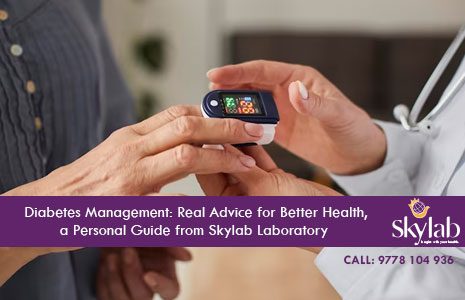No products in the cart.: ₹0.00
The effects of diabetes can affect all parts of your body, not just the skin.
In reality, skin issues can be the first indication of diabetes in a person.
Some are alarming, and others could be cosmetic (harmless). Whatever the case, be aware of changes to your skin and discuss with your doctor the concerns you may have. It’s safer to be cautious rather than be sorry. The good news is that most skin issues are preventable or easily managed if caught in the early stages.
Many of these conditions are skin issues that anyone can suffer from. However, people who have diabetes are more susceptible to them. This includes fungal infections, bacterial infections and itching. Other skin conditions are more common or just to those who have diabetes. They include diabetic dermopathy, diabetic necrobiosis lipoidal, diabetes-related blisters, and exudative skin conditions like xanthomatotic.
General skin conditions
Bacterial infections
Different types of bacterial infections can be found in those with diabetes.
- Eyelid Styes (infections of the eyelid glands)
- Boils
- Folliculitis (infections of hair follicles)
- Carbuncles (deep infections of the skin and tissues beneath)
- Diseases of the nail area
The inflamed tissues tend to be red, hot, swelling and painful. Different organisms can trigger infections, with the most prevalent being Staphylococcus bacteria, sometimes referred to as Staph.
Bacterial infections could be life-threatening, especially for those with diabetes. Nowadays, deaths are rare due to antibiotics and improved ways of control of blood sugar (blood sugar) control.
Even today, people who have diabetes are more susceptible to bacteria-related infections than the rest of us have. The doctors believe that people who have diabetes may lessen the risk of getting this type of infection by taking proper skin hygiene.
If you suspect that you’ve got an infection caused by bacteria, consult your physician.
Fungal infections
The cause of fungal infections that affect people with diabetes is usually Candida albicans. The yeast-like fungus may cause red, itchy areas with tiny scales and blisters. These infections typically occur in humid, warm areas of skin. The most troublesome areas are beneath the breasts, in the vicinity of the nails between toes and fingers around the lip corners, beneath the foreskin (in uncircumcised males) and around the armpits and the groin.
Common fungal infections are jock’s itch and ringworm (a circular itchy patch), and vaginal infection that can cause itching.
Contact your doctor if you suspect that you’re suffering from an infection caused by yeast or fungal.
Itching
Itching that is localized is usually due to diabetes. It could be due to an infection with yeast, dry skin, or poor circulation. When circulation issues cause itching, the itchiest areas could be located in the lower regions of the legs.
It is possible to manage to itch yourself. Limit the amount of time you bathe, mainly when the humidity is lower. Use mild soap and moisturizer, and apply a cream to your skin after bathing.
Good skincare
There are many options you can take to help prevent skin problems:
- Maintain a healthy level of diabetes. Patients with high glucose levels are more likely to suffer from dry skin and are less able to fight harmful bacteria. Both of these conditions increase the chance of contracting an infection.
- Make sure that your skin is dry and clean.
- Avoid hot baths and showers. In case your skin appears dry, avoid bubble baths. Moisturizing soaps may help. Then, apply a regular skin lotion, but do not apply creams on your toes. The additional moisture could encourage fungus to flourish.
- Avoid dry skin. Itchy or dry skin could cause it to break open and let infection develop. Apply a moisturizer to your skin to avoid chapping, particularly cold or windy conditions.
- Make sure to treat cuts immediately. Make minor scratches clean using detergent and water. Use only anti-biotic creams or an ointment if your doctor recommends it. Treat minor cuts using gauze that’s sterile. Consult a doctor immediately in the event of a severe amount or burn or if you have an infection.
- When it is dry and cold, ensure that your home stays humid in the winter months. Take a shower less often during these months, If possible.
- Use gentle shampoos.
- Don’t use feminine cleaning sprays.
- Consult a dermatologist (skin doctor) for skin issues If you’re unable to resolve them independently.
- Be sure to take care of your feet. Check them every day for cuts and sores. Wear flat, broad shoes that are comfortable. Be sure to check your shoes for foreign objects before wearing them.
- Consult your physician or dermatologist if you’re in a position to fix the problem with your skin.




